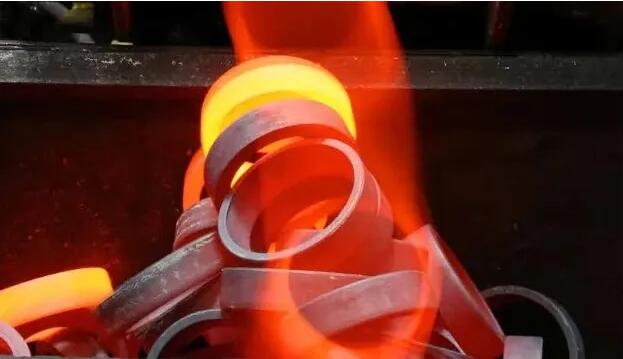
Valve body blank heat treatment process according to different materials are as follows:
1. Heat treatment of gray cast iron
In order to achieve different purposes, gray cast iron can be subjected to different heat treatments after casting. In the production of valve, the heat treatment processes commonly used for gray cast iron valve body and other parts after casting are: thermal aging to eliminate casting stress and high temperature annealing to eliminate free cementite. Thermal aging is a necessary process. High temperature annealing is used to replace thermal aging only when there is primary cementite in the post-casting tissue due to improper control of chemical composition and casting cooling rate.
2. Heat treatment of carbon cast steel
The cast steel has a large residual stress after casting, and sometimes the structure of the cast steel is coarse or even overheated. All these affect the dimensional stability of steel castings, reduce the mechanical properties of steel and are not conducive to the progress of cutting. In order to eliminate the casting stress, refine the organization, improve the mechanical properties and improve the machinability, etc., the carbon steel valve body and other parts are often annealed or normalized + tempered after casting in the valve production.
3. Heat treatment of Austenitic stainless acid-resistant steel
The main defect of austenitic stainless acid-resistant steel is that it is easy to produce intergranular corrosion, which can generally be prevented by heat treatment of steel. The commonly used heat treatment processes for the valve body of Austenitic stainless acid-resistant steel in valve production are: solution treatment (quenching), stabilization treatment and cryogenic treatment.
4. Heat treatment of martensitic heat-resistant steel
Martensitic heat-resistant steel should be annealed in time after casting to prevent cracks, and the annealing holding time should be sufficient (generally 4 to 8 hours). The purpose of annealing of martensitic heat-resistant steel is to eliminate stress, recrystallize, refine grain, reduce hardness, improve machining performance, and prepare microstructure for final heat treatment.
The final heat treatment of martensitic heat-resistant steel adopts normalization + tempering treatment.
5. Heat treatment of carbon steel
The heat treatment of carbon steel to 35 forging steel valve body as an example, 35 steel valve body after forging to normalize, and its final heat treatment to be performed according to the provisions of the valve manufacturing technical documents, generally to be tempered treatment.






